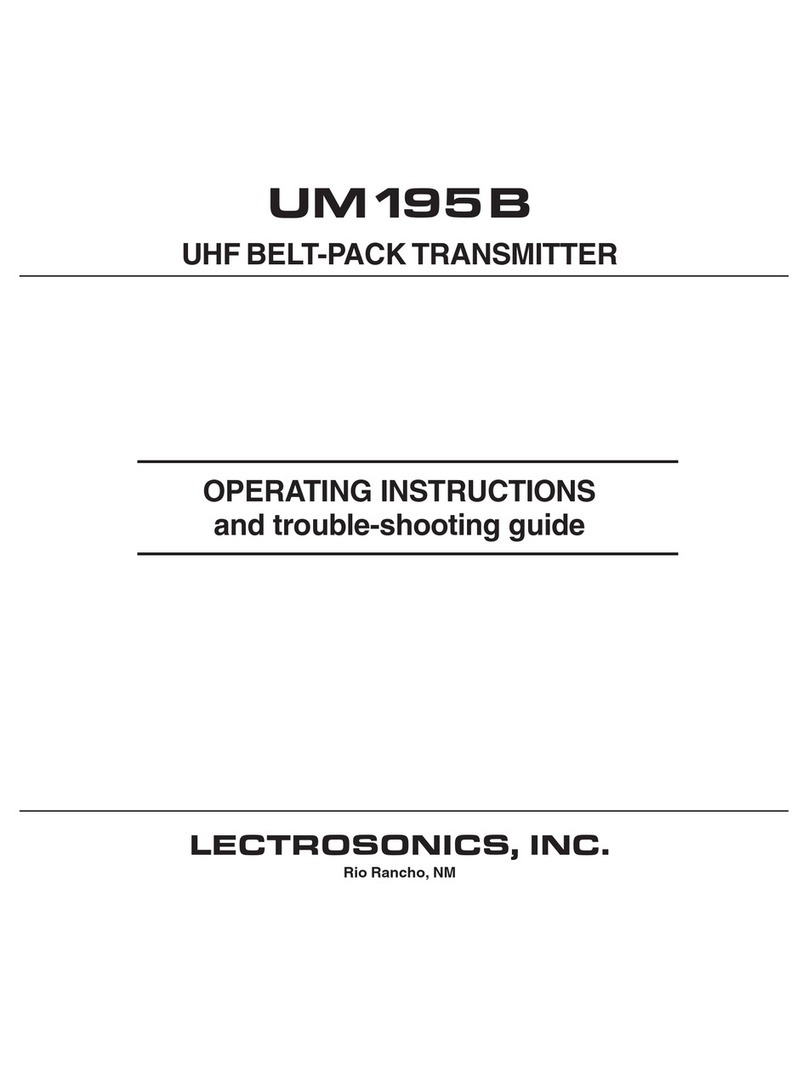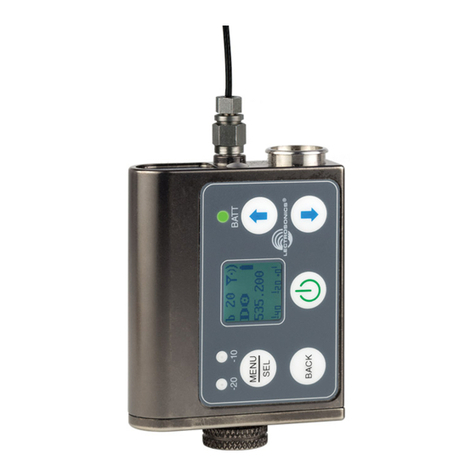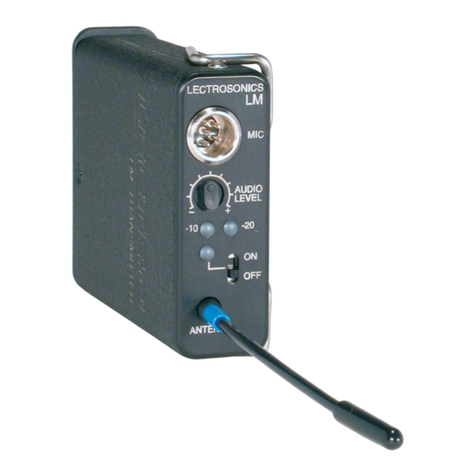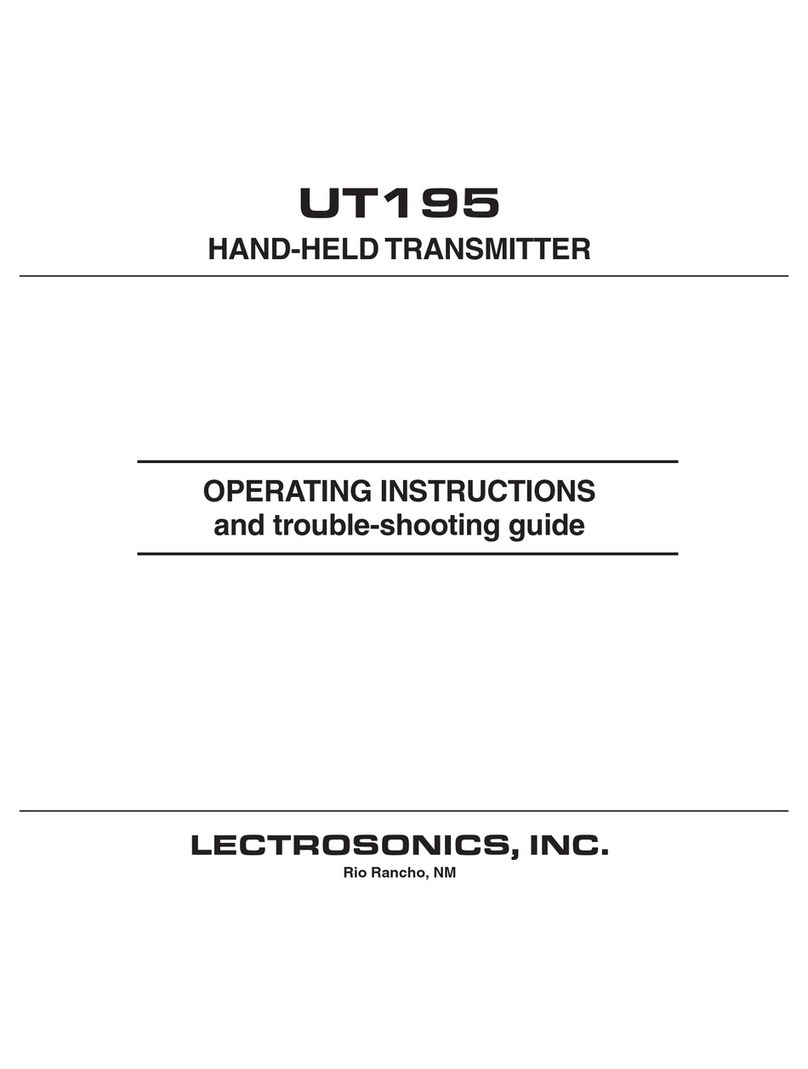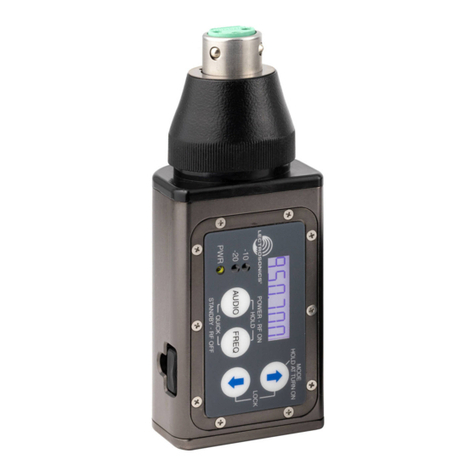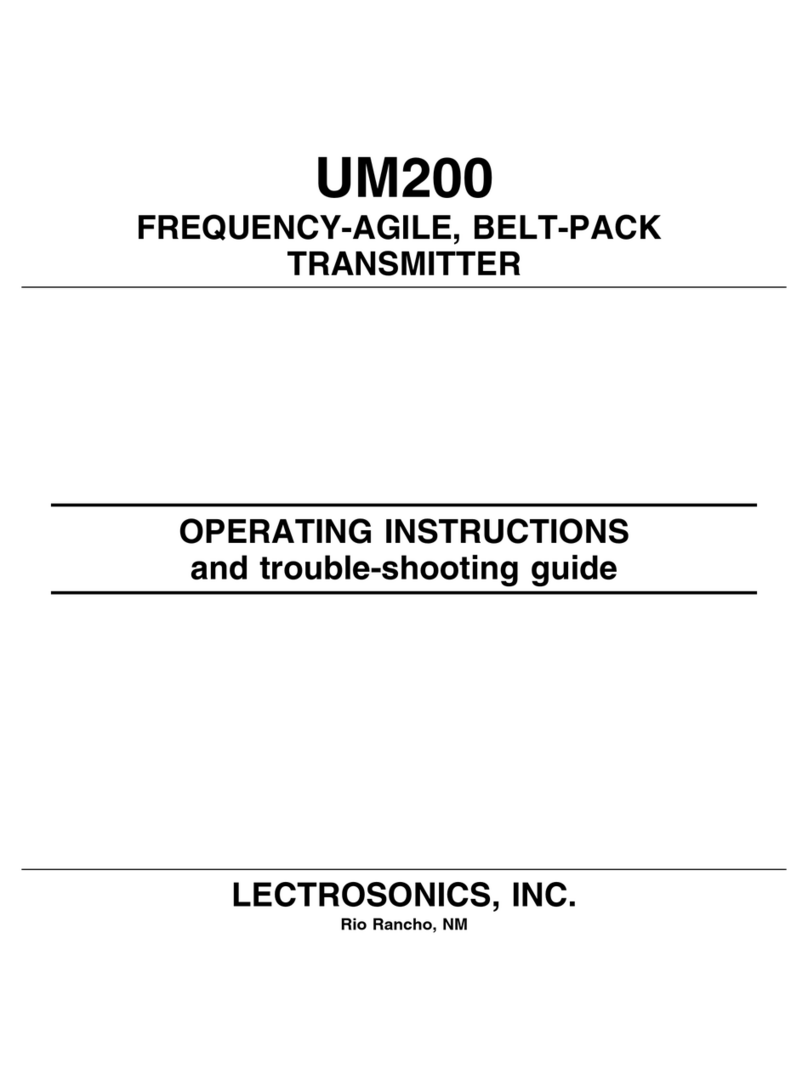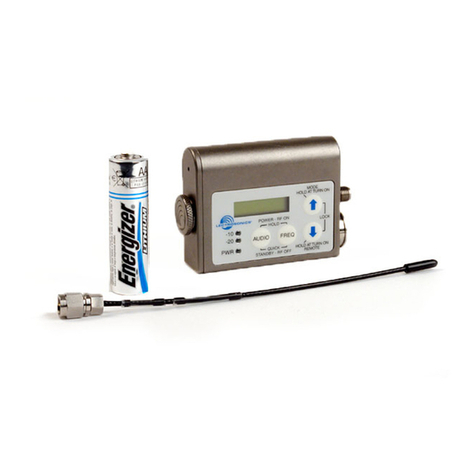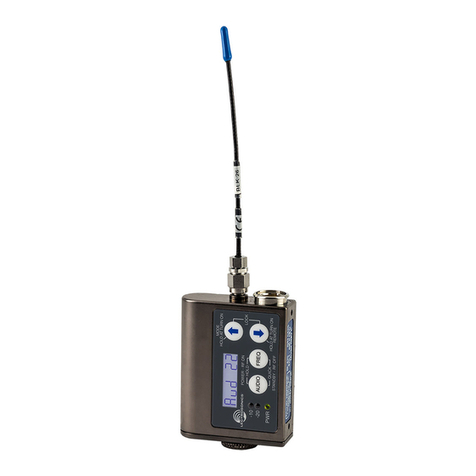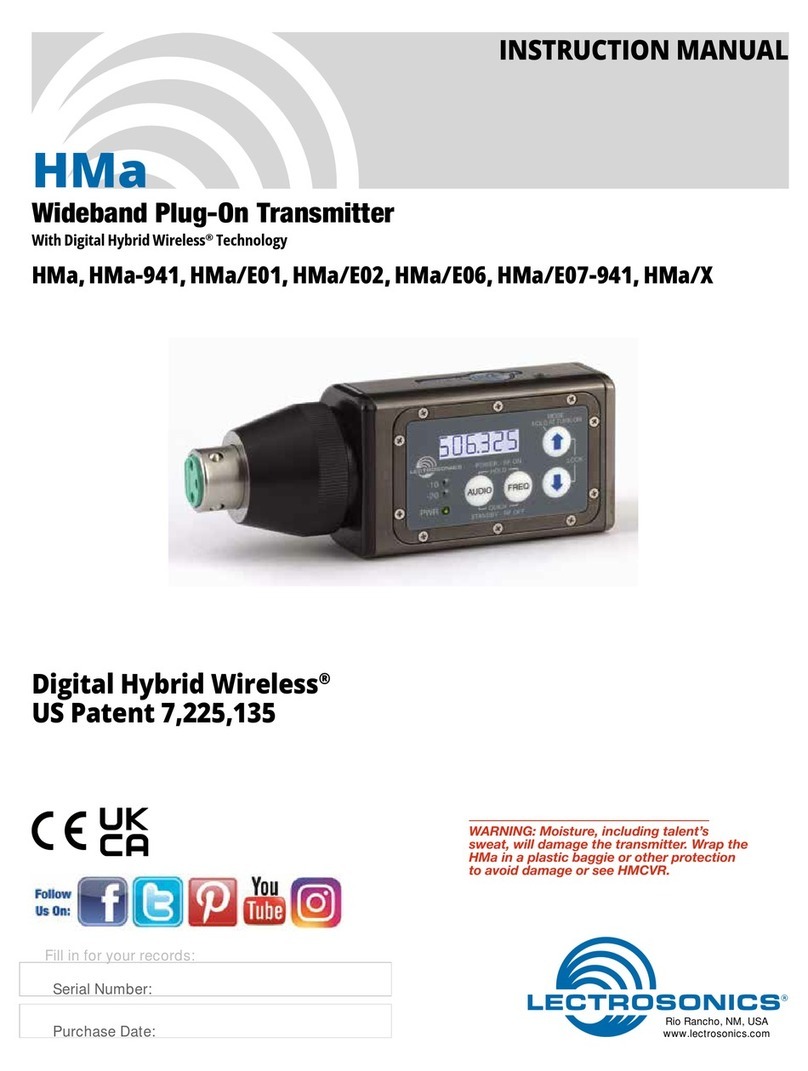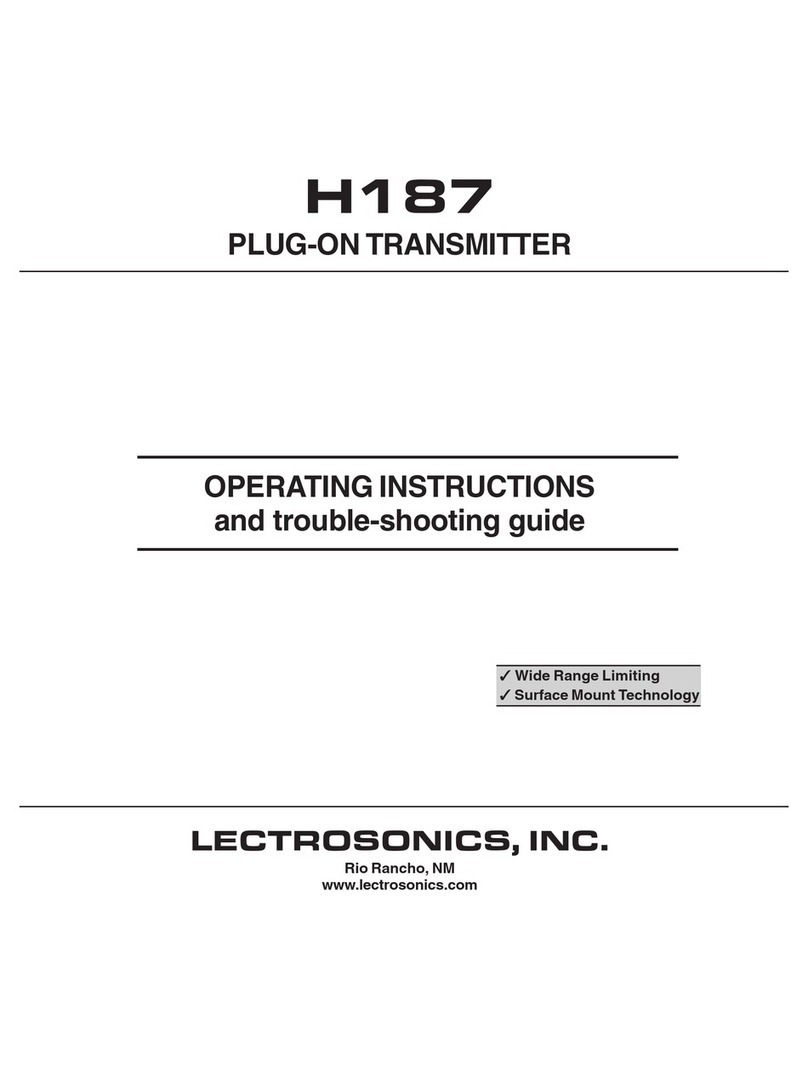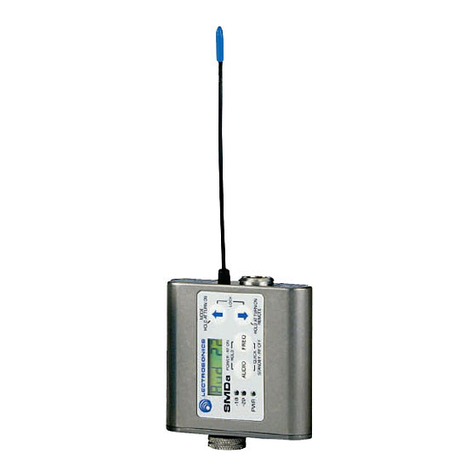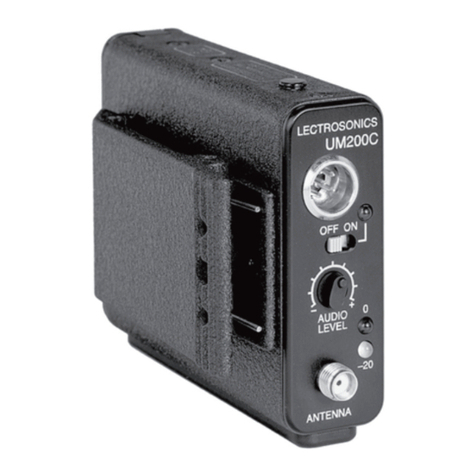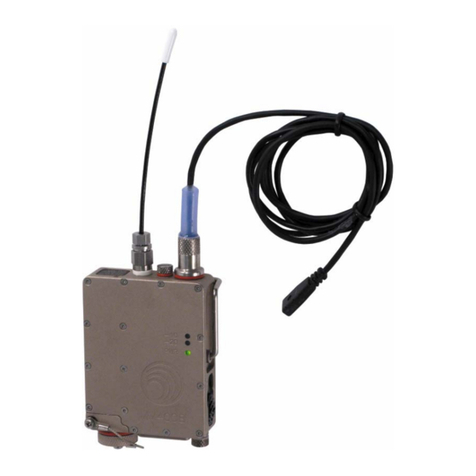
HMa
LECTROSONICS, INC.
10
5) If the unit was set up in Standby Mode, it will be
necessary to turn the transmitter off, then power it
up again in normal operation so the RF output will
be on. Then the other components in the sound or
recording system can be adjusted.
Adjusting the Low Frequency Roll-off (Audio Screen
Menu)
Repeatedly press the AUDIO button until the LF roll-
off adjustment screen appears. Then press and hold
the AUDIO button while selecting the desired roll-off
frequency with the UP and DOWN arrows.
The roll-off frequency can be set to 35, 50 or 70 Hz.
Selecting the Phantom Power Supply (Audio Screen
Menu)
The transmitter input jack can provide phantom power
for the attached microphone if needed, with voltages
at 5, 15 or 48. Phantom power will consume a slight
amount of battery power, so it can also be turned off.
With the transmitter powered on and in the normal or
standby mode, press and hold the audio button and ob-
serve the LCD. Release the button and press and hold
it again. Repeat this process until the display indicates
the PH.
Once you get to the PH setting, keep the AUDIO button
pressed, then use the UP and DOWN arrow keys to
cycle through the available settings (off, 5, 15, 48 volts)
until the desired setting is displayed.
When you release the AUDIO button, the setting will be
stored to the value you selected.
About the Phantom Power Supply
Three phantom voltages are selectable from the control
panel. The voltages are:
• 5 Volts for lavaliere microphones,
• 15 Volts for some professional mics requiring high
current and for many common stage mics that will
operate over a wide phantom Voltage range of 12 to
48 Volts. With the proper adapter, this position can
also be used with T power microphones. See our
web site for details on finding or making the proper
adapter.
• 48 Volts for microphones that do in fact require a
supply greater than 18 Volts. (See below for a dis-
cussion of why 42 and not a “true” 48 Volts.)
For longest battery life use the minimum phantom
voltage necessary for the microphone. Many stage
microphones regulate the 48 Volts down to 10 Volts
internally anyway, so you might as well use the 15
Volt setting and save some battery power. If you are
not using a microphone for the input device, or are
using a microphone that does not require phantom
power, turn the phantom power off.
Phantom power should only be used with a fully
floating, balanced device such as most microphones
with a 3-pin XLR connector. If you use the phantom
power with an unbalanced device or if pins 2 or 3 are
DC connected to ground, then you will draw maxi-
mum current from the power supply. The HM is fully
protected against such shorts but the batteries will be
drained at twice the normal rate.
The transmitter can supply 4 mA at 42 Volts, 8 mA
at 15 Volts, and 8 mA at 5 Volts. The 42 Volts setting
actually supplies the same voltage to a 48 Volt mi-
crophone as the DIN standard arrangement due to a
dynamic biasing scheme that does not have as much
voltage drop as the DIN standard. The 48 Volt DIN
standard arrangement protects against shorts and
high fault current with high resistance in the power
supply feeds to pins 2 and 3. This provides protection
if the supply current is accidentally shorted to ground
and also keeps the microphone from being attenu-
ated by the power supply.
The HMa improves on those functions and is able to
use less power from the battery by using constant
current sources and current limiters. With this dynam-
ic arrangement the HMa can also supply more than
twice the current of competing 48 Volt plug on units
and provide four times the current for some very high
end 15 Volt microphones.
Setting Transmitter Operating Frequency
1) If the LCD is displaying something other than the
Frequency Screen, press the FREQ button on the
Control Panel to enter this screen.
Note: The default display is in MHz. Pressing
the FREQ button again displays the operating
frequency as a two-digit hexadecimal number
that corresponds to legacy Lectrosonics
products that used two 16-position switches to
set the frequency.
2) While holding the FREQ button, use the UP or
DOWN arrow buttons to move the operating fre-
quency up or down.
Note: The operating frequency displayed on
the LCD wraps as it reaches the upper or lower
end of its range. Thus, if you intend to move
the operating frequency from the lower end of
the range to the upper end, it may be faster
to do this by using the DOWN arrow until the
frequency wraps to the upper end.
